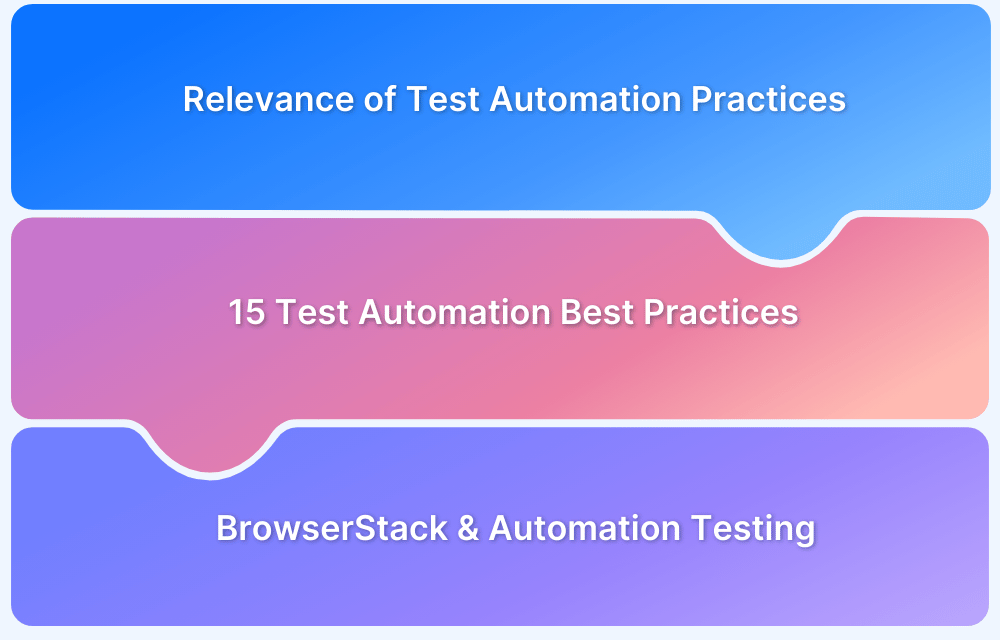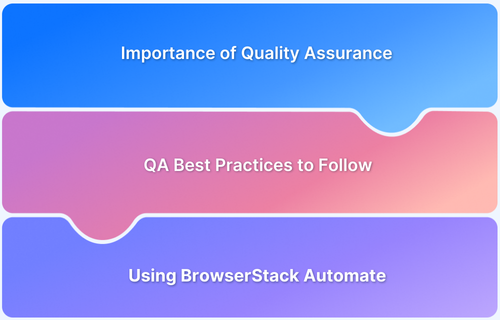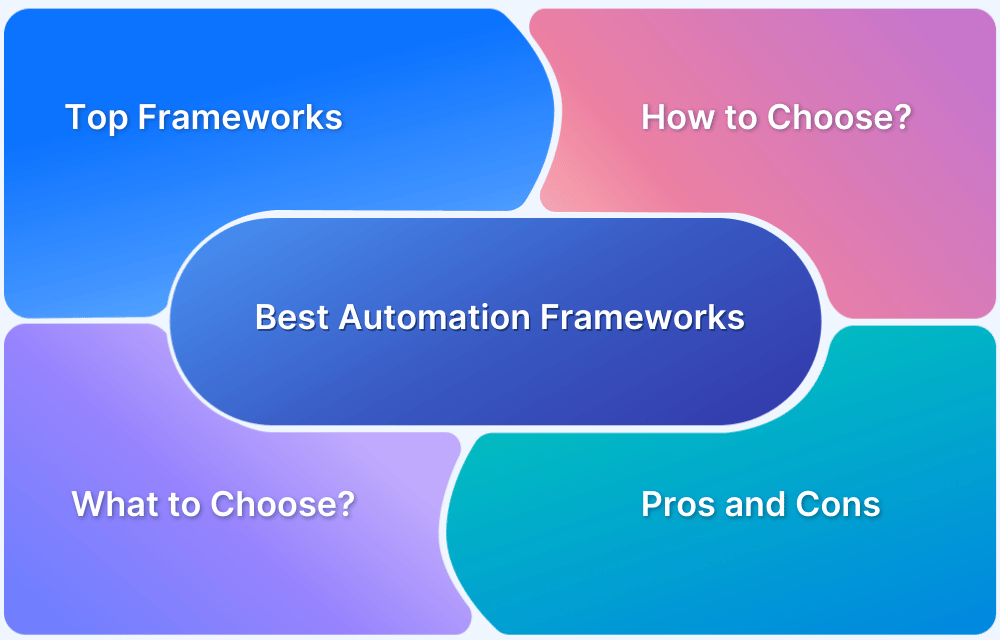Test automation is critical in modern software development, enabling faster delivery and improved reliability. However, the success of automation depends on key testing elements such as scope, test design, execution, and reporting within a well-defined strategy.
Overview
A test automation strategy is a structured plan that guides the implementation and management of automated testing to ensure efficiency and effectiveness. It defines what to automate, how, and with which tools, aligning testing activities with business goals.
Benefits of a Test Automation Strategy
- Improves test coverage and consistency
- Reduces manual testing effort and human error
- Accelerates release cycles and feedback loops
- Enhances the maintainability and scalability of tests
Key Elements of an Effective Test Automation Strategy
- Clear definition of scope and goals
- Selection of appropriate test types and approach
- Choosing the right automation tools
- Designing maintainable and reusable test cases
- Planning test execution and integration with CI/CD
- Systematic review of test results and reporting
This article outlines the essential testing elements of an effective automation strategy, providing a clear framework for organizations aiming to optimize their testing processes and enhance software quality.
Understanding Test Automation Strategy
A test automation strategy is a comprehensive plan that defines how automated testing will be implemented, managed, and maintained within a software development lifecycle. It outlines the objectives, scope, tools, frameworks, and processes necessary to integrate automation into testing efforts effectively.
This strategy ensures that automation activities are aligned with business goals, optimized for efficiency, and capable of delivering consistent and reliable results.
Implementing test automation without a clear strategy often leads to fragmented efforts, excessive maintenance, and limited return on investment. A well-defined strategy provides a roadmap that helps teams prioritize automation efforts, select the right tools, and establish standards for creating and executing automated tests.
Benefits of a Test Automation Strategy:
- Improved Test Coverage: Enables automation of repetitive, critical, and high-risk test cases, increasing overall coverage and reducing the risk of defects in production.
- Enhanced Efficiency: Reduces manual testing effort, accelerates test execution, and provides faster feedback, which supports continuous integration and delivery practices.
- Consistency and Reliability: Ensures tests are executed in a uniform manner, reducing human error and increasing confidence in test results.
Read More: What is Test Reliability in Software Testing
- Better Resource Utilization: Focuses team efforts on high-value activities by automating routine tests, allowing testers to concentrate on exploratory and complex testing.
- Maintainability and Scalability: Establishes standards and frameworks that facilitate easier updates and scaling of automated tests as the application evolves.
To effectively implement and manage your test automation strategy, leveraging a reliable platform like BrowserStack Automate can be invaluable.
BrowserStack Automate provides a scalable, cloud-based environment to run automated tests across 3500+ real device and browser combinations,seamlessly integrating with leading CI/CD tools.
This ensures faster execution, accurate results, and simplified maintenance, helping teams accelerate delivery without compromising on quality.
Key Elements of an Effective Test Automation Strategy
To build a successful test automation strategy, it is essential to focus on several key testing elements that guide the planning, execution, and maintenance of automated tests. These elements ensure that automation efforts are efficient, scalable, and aligned with project goals.
Define Scope and Goals
Automating every test case is neither practical nor efficient. No software release should rely solely on automation without human oversight, especially given the complexity and variability of modern applications. Therefore, the foundation of any successful test automation project begins with clearly defining the scope and goals, often referred to as an Automation Feasibility Analysis.
This analysis helps determine which tests are suitable for automation by evaluating their frequency, complexity, and value. Prioritizing the right tests ensures optimal use of resources and maximizes the return on automation investment.
Tests best suited for automation typically share the following characteristics:
- Repetitive and Time-Consuming Tasks: Automated tests excel at executing repetitive actions such as user log-ins, OTP entries, or data entry, which are monotonous and prone to human error.
- Cross-Platform and Cross-Browser Testing: Tests that need to run across various devices, browsers, operating systems, and screen resolutions benefit greatly from automation. This ensures consistent behavior and performance across diverse environments.
- Data-Driven Tests: Tests that require the same sequence of actions performed repeatedly with different datasets, such as filling out forms with multiple input values, can be automated efficiently to save time and reduce manual errors.
- Long-Duration Tests: Automation is ideal for tests that require significant time to execute manually, allowing these to run unattended and freeing up human resources.
- Regression Testing: Automated regression tests verify that new code changes do not break existing functionality. Given their repetitive nature and critical importance, these tests are prime candidates for automation.
- Tests with Clear Pass/Fail Criteria: Automated tests should produce unambiguous results that can be easily interpreted by the system, reducing the need for manual validation.
By defining a clear scope and setting specific, measurable goals, teams can focus automation efforts where they deliver the greatest impact, improving test efficiency and overall software quality.
Establish the Test Approach
Once a team knows what to test, they need to plan how tests should be run, i.e., which test should be run at which point. The most effective way to structure tests is to utilize the testing pyramid.
The testing pyramid also referred to as the test automation pyramid, lays out the types of tests to be included in an automated test suite. It also outlines the sequence and frequency of these tests. The whole point is to offer immediate feedback to ensure that code changes do not disrupt existing features. Additionally, quick results lead to faster improvements and eventually quicker time-to-market.
Generally, new testing practices must be based on the current QA approaches being unutilized in a team or organization. A seismic shift in mindset, skillset, and learnings take time, which means immediate automation practices must be extrapolated from what the team members can already do.
Analyze the current process, and determine what aspects of it can be used to deploy automation – testing levels, role, task ownership, etc.
Read More: TDD vs BDD vs ATDD : Key Differences
Select the right tools
Automation testing is entirely dependent on tools. Here’s what to consider when choosing the right tool:
- The nature of software: Is the application being tested web-based or mobile-based? To test the former, use a tool like Selenium to automate tests. For the latter, Appium is one of the best possible tools for automation. Check out this automated Selenium testing solution.
- Programmer Experience: Choose frameworks, languages, and tools that match testers’ comfort and experience. Some of the most popular languages used for automation testing include Java, JavaScript, Ruby, C#, etc. Read about the top test automation frameworks in the market.
- Open Source or not: Depending on budget constraints, one may choose to use open-source tools such as Selenium or Appium for automation purposes. However, it is essential to remember that all open-source tools are not inferior to their commercially available counterparts. For example, Selenium Webdriver is an open-source tool that is most highly favored by automated testers worldwide.
- Real Device Access: Every website or app needs to be tested on real devices and browsers. Remember that device fragmentation is a major concern for every developer and tester. Every website has to work seamlessly on multiple device-browser-OS combinations.
No emulator or simulator can replicate real user conditions. The software needs to be tested on real devices so that they can work in real user conditions such as a low battery, incoming calls, weak network strength, and so on. BrowserStack’s cloud Selenium grid offers 3500+ real devices and browsers for automated testing. That means users can run tests on multiple real devices and browsers by simply signing up, logging in, and selecting the required combinations.
Design Test Cases
After determining the test approach and picking the tools, start designing test cases to be executed. At this point, if a team is new to test automation, it would be best to approach individuals with experience in automation for initial guidance. Don’t expect manual testers to be automation testers overnight without some professional handholding.
A few best practices for designing test cases are:
- Create test case templates that can be reused in multiple projects. Start projects by checking if other teams or projects have created similar test cases. This optimizes time and effort.
- Create concise and easily decipherable test cases. There is no guarantee that the person writing tests will also be executing them, especially in large teams or in projects dealing with layered, complex software.
- Prioritize tests in the hierarchy based on which feature or software component is being tested. For new teams, this practice will take some time to perfect.
Read More: Fundamentals of Writing Good Test Cases
Create Execution Plan
Once test cases have been designed, the next step is to define how and when they should be executed. A well-structured execution plan ensures that tests run in the correct sequence to detect bugs early and validate the performance of key features.
Begin by running individual test cases to verify isolated functionalities. As the test suite expands, incorporate regression testing to ensure that code changes do not introduce defects in existing functionality. Regression tests should be executed consistently after every significant code change and during every test cycle.
When planning test execution, outline daily processes, responsibilities, and task ownership clearly. This brings consistency and predictability to the testing workflow.
Implementing a CI/CD pipeline is key to streamlining execution. It automates the flow, from committing code to version control, triggering automated tests, integrating with the main build, and preparing the code for deployment. Tools like Jenkins, GitHub Actions, or CircleCI can help manage these automated workflows effectively.
A structured execution plan accelerates testing and improves traceability, collaboration, and deployment readiness across teams.
Read More: How to Improve Automation Test Coverage
Review Test Results
As part of the CI/CD pipeline, automated tests are triggered each time new code is committed, validating key software parameters and ensuring stability. While these tests improve release reliability, failures are inevitable and must be addressed promptly to maintain code quality.
After initial test runs, QA teams can analyze test performance to identify slow or inefficient test suites. Optimizing these can significantly reduce execution time and improve pipeline efficiency.
To refine the QA process further, it’s essential to gather feedback from multiple stakeholders, including QA managers, DevOps engineers, developers, product managers, and even customer-facing teams like sales. Their insights help align the testing strategy with broader business objectives and technical requirements.
Comprehensive documentation is critical at every stage of the automation strategy. This includes project goals, requirements, selected tools, test cases, scripts, execution results, issue analyses, and optimization efforts. Maintaining this documentation ensures traceability, facilitates collaboration, and supports continuous improvement.
Read More: Best 20 Test Automation Frameworks
Why Choose BrowserStack for Test Automation?
BrowserStack Automate is a robust cloud-based testing platform designed to streamline and enhance your test automation strategy. It offers a comprehensive suite of features that address common testing challenges, ensuring efficient and reliable test execution.
Key Advantages:
- Extensive Real Device and Browser Coverage: Access a vast grid of over 3,500+ real desktop and mobile browsers, including the latest devices and operating systems.
- Seamless Integration with Popular Frameworks: BrowserStack supports leading test automation frameworks such as Selenium, Cypress, Playwright, and Puppeteer. This compatibility allows teams to integrate BrowserStack into their existing workflows without significant changes.
- Parallel Test Execution: Run multiple tests simultaneously to accelerate test cycles and reduce feedback time. This parallelization capability is crucial for continuous integration and delivery pipelines.
- Secure Local Testing: BrowserStack’s secure local testing feature allows you to test applications hosted on internal, development, or staging environments. This ensures that applications are tested thoroughly before deployment.
- Advanced Debugging Tools: Utilize features like video recordings, screenshots, and detailed logs to identify and resolve issues quickly. These tools enhance the debugging process, leading to faster issue resolution.
- Comprehensive Security Compliance: BrowserStack is SOC2 Type 2 and GDPR compliant, adhering to stringent data security and privacy standards.
By combining BrowserStack Automate with your test automation strategy, you can achieve faster release cycles, improved test coverage, and enhanced product quality, all while reducing the overhead associated with maintaining testing infrastructure.
Conclusion
A well-defined test automation strategy is essential for delivering high-quality software at speed and scale. By carefully outlining the scope, selecting the right tools, establishing a structured approach, and integrating automation into CI/CD workflows, teams can reduce manual effort, detect bugs early, and accelerate time-to-market.
Continuous optimization, stakeholder collaboration, and thorough documentation further enhance the effectiveness of the strategy.
Platforms like BrowserStack Automate support this vision by providing a scalable, reliable, and secure cloud infrastructure to run automated tests across real devices and browsers. Leveraging such tools ensures broader test coverage, faster feedback loops, and more confident releases.







